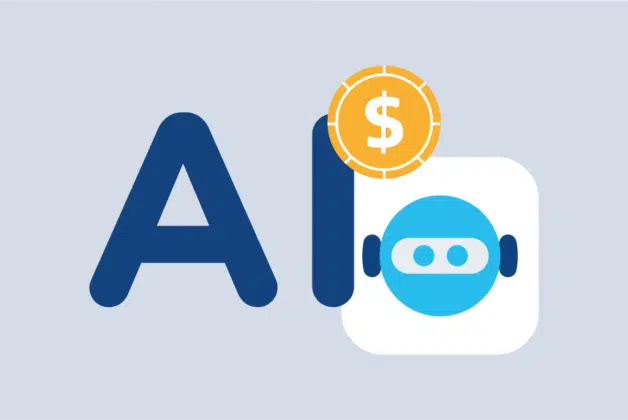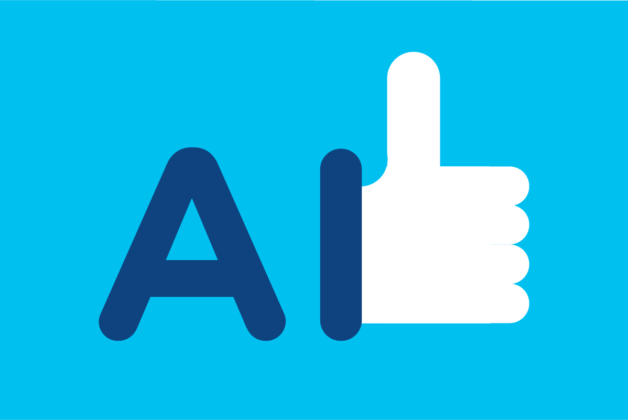 Stefania Solivardi - 22 January, 2025 - 7 ’ read
Stefania Solivardi - 22 January, 2025 - 7 ’ readCall Recording in 2025: the use cases and features you need
Good old Call Recording, such widely known and used across companies worldwide... And yet, while many businesses embrace recording phone calls as standard practice, few explore its full potential. From elevating customer experience to streamlining workflows and meeting complex global regulations, call recordings hold the keys to open doors most companies overlook.
Call recording first gained traction in the early 2000s. Back then, storage limitations in on-premises systems meant only a fraction of calls could be recorded For this reason, only sectors where recording calls was paramount cared about this technology: contact centers, financial institutions, legal firms, and public safety organizations among others. It was all about convenience—reviewing past conversations or tracking specific events.
Fast forward to today, and cloud technology sets a different scene. Scalable SaaS solutions now enable businesses to record and store vast volumes of calls securely without limits. This presents us with the following scenario:
- Recording and storing calls is now easier, enabling companies to capture virtually every phone interaction for operational purposes, including reviewing interactions to ensure compliance with internal policies, coaching agents using real-world examples, monitoring service quality to improve customer satisfaction, and resolving disputes by providing an indisputable record of what was said.
- The enormous database created by call recording contains sensitive customer data, making compliance with evolving data privacy regulations a top priority. Each recorded call holds sensitive information—financial details, medical records, legal discussions, or other personal data—making these databases a potential liability if not properly managed. Compliance with regulations like GDPR, HIPAA, PCI-DSS or other regional frameworks is critical to protect customer privacy and avoid hefty penalties. Beyond legal requirements, companies must also implement strong data security measures to guard against breaches, ensuring that customer trust is upheld. In addition, businesses must navigate challenges like ensuring proper consent for recording, securing data in transit and storage, and maintaining clear audit trails for regulators.
- Companies generate such a vast volume of recorded calls that manual review is no longer feasible, making voice AI technologies the only viable solution. Voice AI transcribes, analyzes, and categorizes calls at scale. These tools can detect patterns, identify customer sentiment, and surface insights that would otherwise go unnoticed. For example, AI can automatically alert supervisors to recurring issues in customer interactions or highlight opportunities for upselling.
Taking this new scenario into considerations, it’s 3 use cases call recording mainly covers.
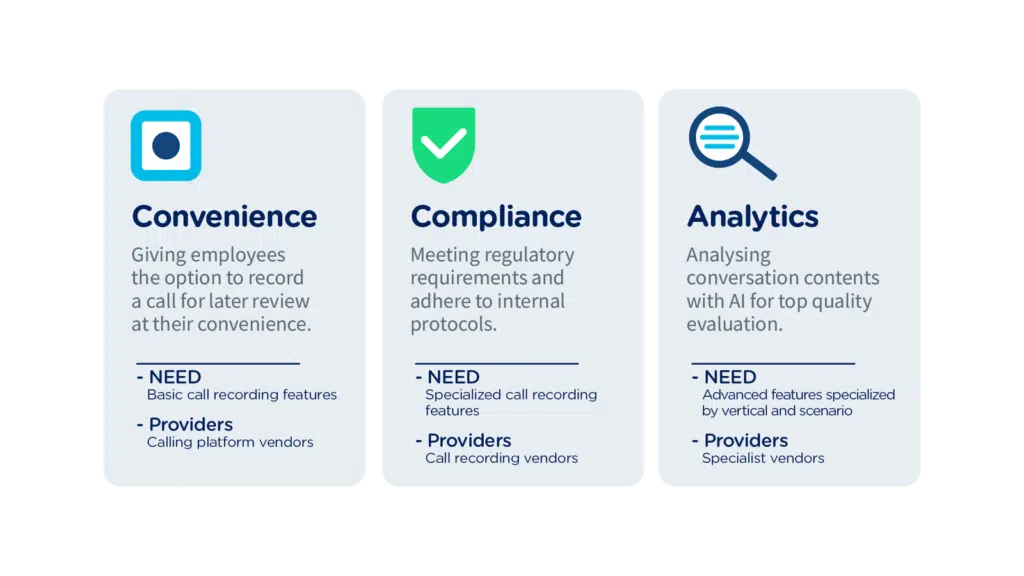
Initially, convenience was the only driver – it hasn’t disappeared today, as it sets the base for more complex use cases to exist. Basic recording features provided by calling platform vendors suffice for this purpose, meeting the need for quick and straightforward call capture.
Over time, however, the focus started to involve compliance and it quickly mounted to the top as businesses faced mounting regulatory pressures to adhere to internal protocols and international data privacy laws. Specialized call recording vendors stepped in, equipping companies with tools to ensure adherence to external and internal standards.
Last but not least, analytics marks the forefront of call recording evolution. The global speech analytics market was valued at approximately $3.31 billion in 2022 and is projected to grow to $10.37 billion by 2030, reflecting a compound annual growth rate (CAGR) of 15.6% during this period¹. Advanced AI-driven tools allow companies to analyze conversation content, extracting valuable insights to improve quality, optimize workflows, and enhance customer interactions. These tools are offered by specialist vendors, driving the strategic use of recorded data.
Call Recording is used across sectors, business sizes, markets, and regions – all with their particular use cases, but with the above ones always in common. So how does a company choose the right call recording solution? What features are nice-to-have and which are must-haves? What regulations should it be aware of when it comes to call recording?
Call Recording features to capture, secure, and analyze every interaction.
Call Recording Features for Convenience
Convenience-only call recording is increasingly rare, primarily used by non-regulated industries like retail or hospitality and small businesses. However, understanding the key features of convenience-focused call recording can lay a strong foundation for upgrading to compliance and analytics-driven solutions in the future.
It provides basic features such as multiple recording methods, including always-on or on-demand recording, with occasional options for scheduled recording or live keep. Seamless integration with calling platforms simplifies workflows, as users won’t have to change screens to use call recording, and basic reporting features give overviews of call data, such as duration, timestamps, and participants. Intuitive search and playback capabilities, along with secure cloud storage, ensure easy access and protection of recordings, supporting scalability as business needs evolve.
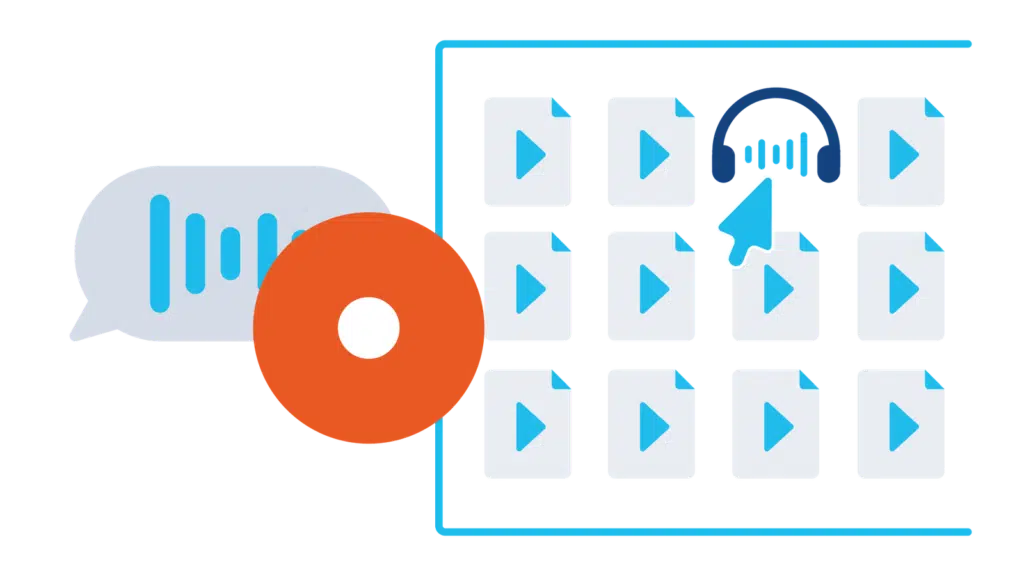
Call Recording Features for Compliance
Compliance in call recording solutions hinges on several critical features designed to meet stringent regulatory standards and protect sensitive data. Compliance-focused call recording ensures adherence to regulations like GDPR, HIPAA, PCI-DSS and more, preventing costly penalties and reputational damage. Key features include Role-Based Access Control(RBAC), limiting access based on user roles, and Legal Hold, preserving recordings during legal disputes. Configurable Retention Policy helps automate the deletion of obsolete data and upkeep of useful recordings, while Data Security measures, such as encryption in transit and at rest, protect recordings from hackers. Audit Trails track user interactions with recordings, and Tampering Detection flags unauthorized changes, ensuring data integrity and compliance with laws like Dodd-Frank and MiFID II.
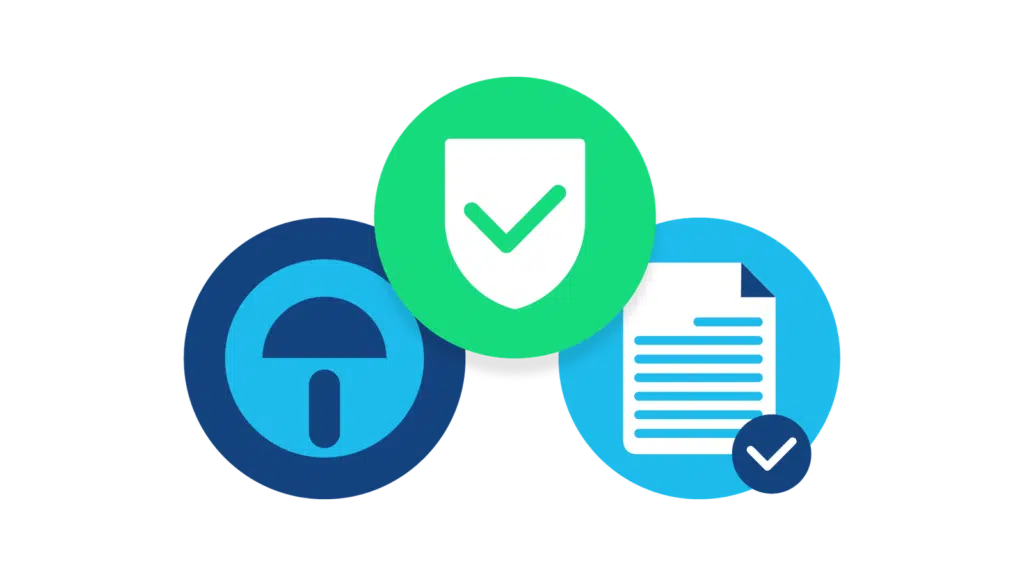
Call Recording Features for Analytics
If you want to spot potential issues or improvements in your support team, customer care team, or sales team, you should probably travel back and forward through time to be able to listen to every conversation! And at that point, the data goes to waste. Voice AI provides, first and foremost, transcriptions, which convert speech into text for easier review and analysis. Sentiment analysis identifies emotional tones to provide insights into customer experience and agent performance, and it’s particularly useful when the solution supports separation of calling party & operator. Tagging labels calls by topic or sentiment for efficient data retrieval, while alarms trigger notifications based on specific thresholds like negative sentiment or compliance keywords. Filters refine call data analysis, and, usually, a dashboard visualizes key metrics for informed decision-making.

Imagicle Call Recording with Voice Analytics – your best ally going forward.
Imagicle Call Recording covers every use case and can be tailored to your business’s specific needs.
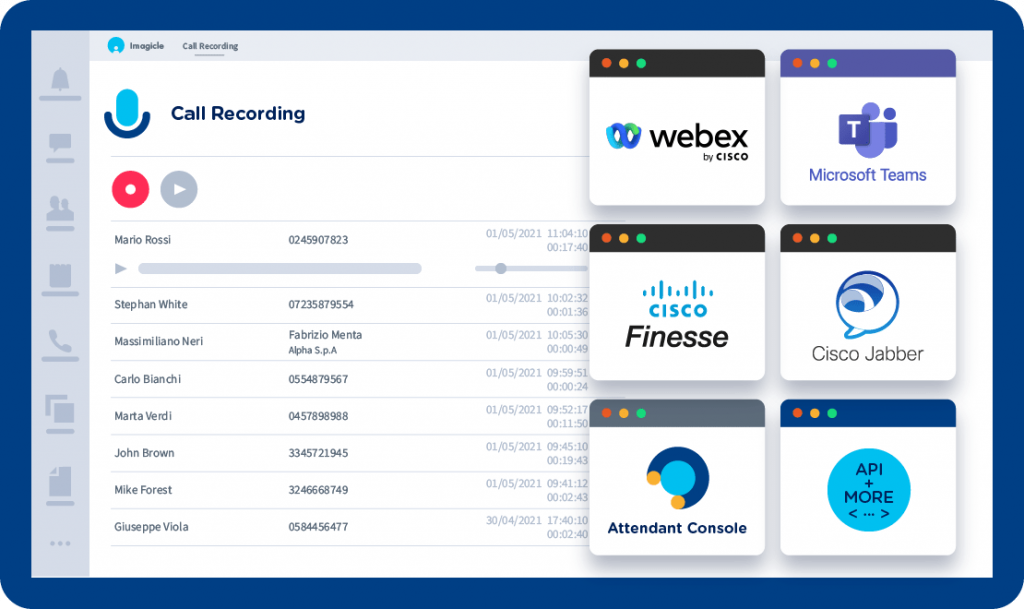
Imagicle offers always-on, on-demand and live keep recording users can trigger, pause, resume, review, listen, download, or delete recordings directly from the web portal or through the Webex, Webex Contact Center, Microsoft Teams app, as well as Imagicle Attendant Console. The platform also offers advanced features for improved recording management, such as filters that allow users to sort recordings by specific users, groups, date, call direction, duration, size, and more.
Imagicle Call Recording seamlessly integrates with all Cisco calling and contact center platforms as well as Microsoft Teams, enabling businesses to migrate to the cloud at their own pace while maintaining a unified and centralized recording database.
To further elevate the experience, Imagicle Call Recording includes Screen Recording, which captures agents’ desktop activities during calls, providing a comprehensive view of customer interactions. This allows supervisors to understand what an agent was doing during the call – do they have access to the right resources? Did they open the right folder? Did they guide the customer correctly?
When it comes to compliance, you can’t go wrong. Imagicle Call Recording offers Role-Based Access to ensure secure and appropriate management of recordings, giving only authorized personnel the chance to review conversations: record-only users have no access to conversations, while standard users can only access their own recordings. Group supervisors can view recordings for all groups, and users with full management access can oversee all conversations and modify global settings.
With Legal Hold, specific recordings can be tagged for extended retention, ensuring that critical data is preserved for legal or compliance purposes. The solution also features a Configurable Retention Policy, allowing businesses to store recordings for an unlimited time, offering full flexibility to retain conversations based on their relevance and use.
Data Security is a priority, with all recorded conversations encrypted at rest, whether stored on Imagicle’s On-Prem or Cloud server, or on an external file server, and indexed within the UCX Platform’s SQL Server database. Enabled users can pause and resume recordings, enabling them to skip sensitive data if necessary.
The Audit Trail provides administrators with detailed logs of user activities on each recording, including playback, download, and deletion actions. Key properties such as user, phone, tenant, number, recording date, time stamp, duration, and unique recording ID are stored in the SQL Server index table. Additionally, Tampering Detection ensures the integrity of both voice and screen recordings through AES encryption and digital signatures, preventing any unauthorized alterations.
Last, but not least, the AI in Voice Analytics transcribes every conversation, in multiple languages, and highlights important topics for supervisors to see at a glance. Finding the time to analyze conversations is a memory of the past with Voice Analytics – granular data from conversations is extracted and grouped in an easy to read dashboard and it allows to tag conversations, set alarms for specific keywords or sentiment, divide users in groups. And the best part is the sentiment analysis, assigning a positive or negative value to whole conversations but also to single sentences, single users, and more.

Whether your company is looking for convenience, deals with stringent compliance regulations or is looking for data-drive customer service improvement, Imagicle is here to help – drop us a line to know more about our solutions.
¹Source: https://www.fortunebusinessinsights.com/speech-analytics-market-108836
You might also be interested in…
-
Products BlogCall Recording Best Software Solution 2023Call Recording Best Software Solution 2023Why should your company adopt a Call Recording solution?
-
Products BlogEnsuring Compliance and Exceeding Customer Expectations with Call RecordingEnsuring Compliance and Exceeding Customer Expectations with Call RecordingImprove customer service, enhance agent training, and maintain compliance across various sectors.
-
Use Case BlogContact Center Optimization: 3 Essential Tips for ManagersContact Center Optimization: 3 Essential Tips for ManagersContact Center Optimization: three tools to bring it to the next level and facilitate customer satisfaction and loyalty.
